16+ SAMPLE Promotion Agreement
-
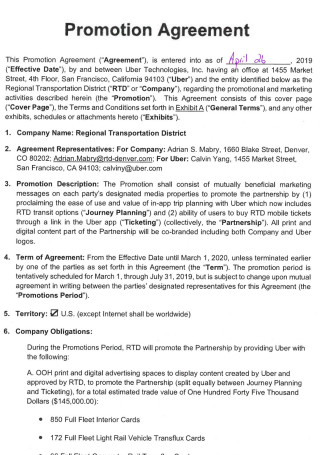
Promotion Agreement
download now -

Advertising And Promotion Agreement
download now -
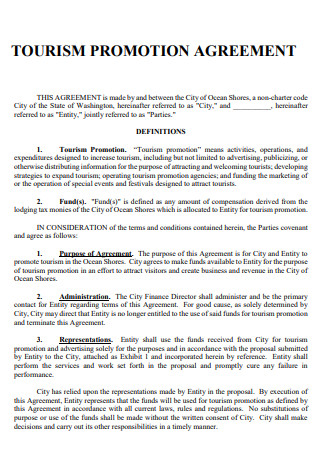
Tourism Promotion Agreement
download now -
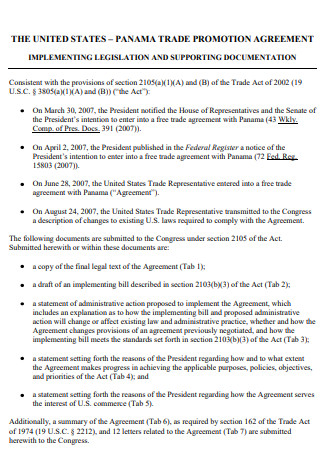
Trade Promotion Agreement
download now -
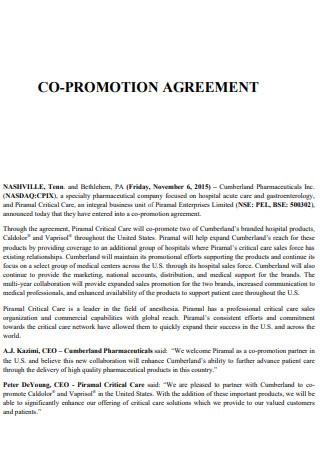
Co Promotion Agreement
download now -
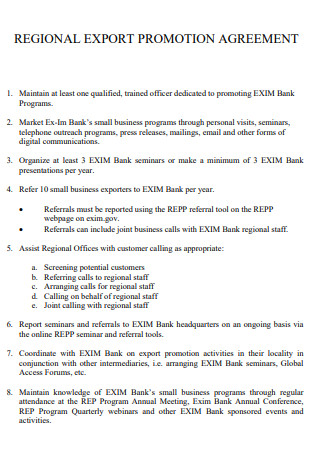
Regional Export Promotion Agreement
download now -
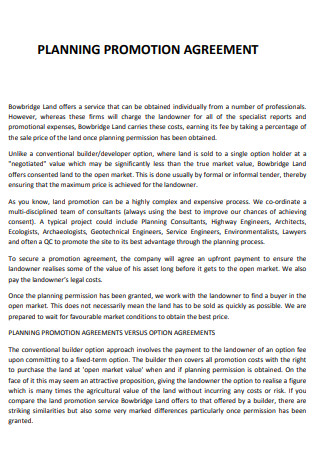
Planning Promotion Agreement
download now -
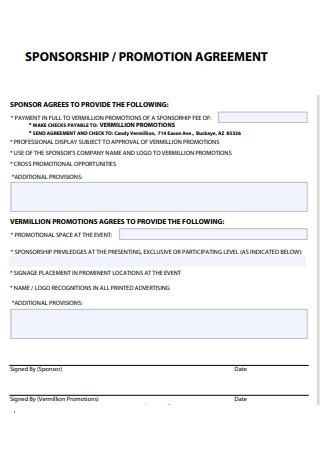
Sponsorship Promotional Agreement
download now -
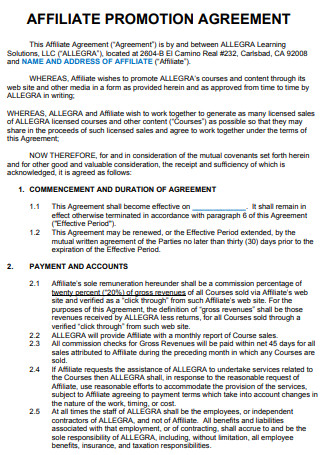
Affiliate Promotion Agreement
download now -
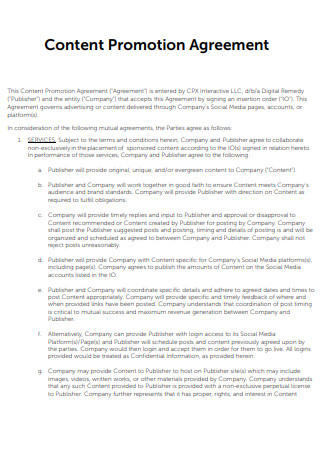
Content Promotion Agreement
download now -

Merchant Promotion Agreement
download now -
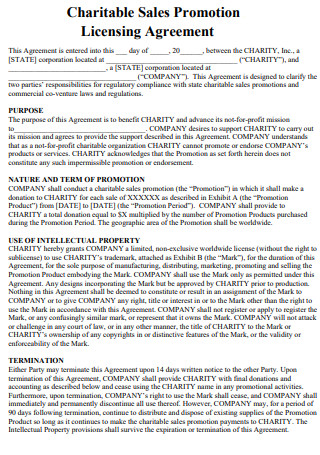
Charitable Sales Promotion Agreement
download now -
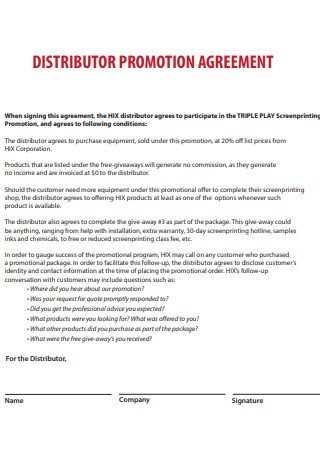
Distributor Promotion Agreement
download now -
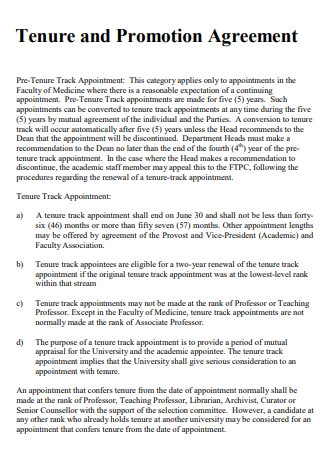
Tenure and Promotion Agreement
download now -
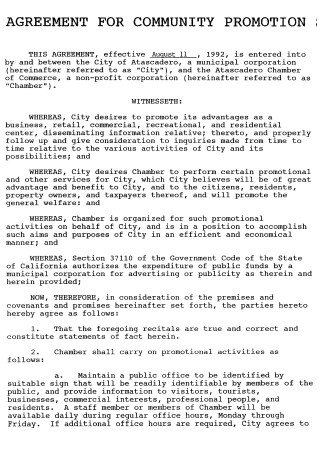
Community Promotion Agreement
download now -

Class Promotion Agreement
download now -
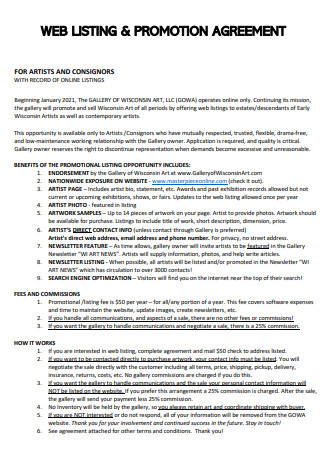
Web Listing and Promotion Agreement
download now
FREE Promotion Agreement s to Download
16+ SAMPLE Promotion Agreement
What Is a Promotion Agreement?
Important Sections of a Promotion Agreement
What Are the Different Types of Promotion?
How to Promote a Product
FAQs
What is the difference between marketing and promotion?
How important is a corporate image in promoting a product?
What role does product sampling play in its promotion?
What Is a Promotion Agreement?
Before everything else, what is promotion, in marketing terms? Promotion, or promotional marketing, refers to a group or series of activities that are used to share information about a specific brand, product, or service, particularly when they are still new to the market, towards as many potential customers as possible for the main purpose of getting more people to know who or what they are and to generate an increase in sales traffic.
A promotion agreement is a business document that serves as a legal agreement between two or more parties that permits one party to utilize the trademark of another in exchange for payment. This agreement will explicitly mention how a brand could be used in promotional materials, as well as the expected payments, and also talk about the eventualities that would transpire should the parties involved choose to terminate the agreement. The main things that are explained in this document include each party’s duty in the business connection, as well as the scope of work, and the terms and conditions among the parties involved.
Important Sections of a Promotion Agreement
Listed and discussed below are the important sections that should be present when creating a promotion agreement:
What Are the Different Types of Promotion?
Listed below are the common types of promotion in the marketing sector:
- Sponsorships – Perhaps one of the most prevalent types of promotions includes sponsorships. Each public event is primarily funded through sponsorships. A sponsorship is when a business, an organization, or even an individual, contributes resources and money to an event or an individual in exchange for publicity and promotion. These are a fantastic method to take ‘bought commercials’ to the next level because you can gain the credibility of a celebrity or an influencer through them.
- General Advertising – This type of promotion simply assists multiple companies to get in front of the public’s eyes through mass media such as newspapers, magazines, TV spots, and billboard posters even without focusing on a single specific company. Though not targeted, these can aid with brand recognition on a larger scale by spreading a word or awareness, promoting any newly introduced service, items, or organization. Advertising is used as a promotional technique by the firm since it reaches a large number of individuals in a matter of seconds.
- Digital Promotions – This type of promotion typically includes all sorts of marketing that is found on the internet. Digital promotion includes online ads such as SEO, content marketing, social media marketing, pay-per-click marketing, affiliate marketing, and so on. Although these are less expensive and faster to generate, the influence created by this type of advertising might take time to be felt.
- Sales Promotions – This type of promotion typically follows the procedure of limited-time offers, which place the client in a situation where they must respond quickly. These include gifts and promotions that keep customers on the edge of their seats throughout the transaction. Whether it’s a free item or a bargain item, most buyers will be drawn to a deal if they see that they may spend less than the initial price. However, having too many sales promotions at once in a single company will only prove to stale the excitement of customers.
- Public Relations – Public relations promotion is the dissemination of information or a message between a corporation, an individual, or the broader public. Although press releases are the most typical technique of this sort of advertising, they are not the only approach. These aid in the protection, enhancement, or even reconstruction of a person’s, company’s, or brand’s reputation. A strong public relations promotion effort may be beneficial to the company that is exercising it.
How to Promote a Product
When a company or a business has a new product or service, the main thing that they usually do is to promote it to their potential customers in order to generate exposure which results in bringing in revenue. With that being said, here are the steps on how a product is promoted.
-
1. Understand the Target Market
This is the first step in promoting a product. This may seem easy, but it is also easy to fail at this step. What should be done here? Well, in this step, the factors that need to be addressed in order to properly understand your target market include your ideal customer profile, the demographic information that you, as a marketing manager should be aware of, and the different outlets that the potential customers use in order to gather information. It is also important that you understand their demands, because no matter how hard you promote your product, if there is no demand for it, it’s still not gonna sell.
-
2. Understand the Product
After identifying and understanding the target market and what they really want, proceed to this step, which is to understand the product at hand. This step is especially important if the product is still at its early stages of development. The factors you need to consider in order to have a full understanding of your product include identifying it properly, its cost, the challenges it addresses, its advantages over competing products, and so on. It is also important to ensure that you have a proper understanding of how it properly fits in the target market.
-
3. Create a Plan
After developing a full understanding of your product and how it works in your target market, this step will then follow. It’s pretty common sense among the majority that without a plan in place, the product promotional efforts will just be all over the place and be a complete mess. Factors that need to be addressed in this step include the launch price of the product, the revenue goals over a given amount of time, the challenges in getting the customers to purchase the product, and the steps that will be taken to overcome said challenges.
-
4. Educate Your Customers
After creating a plan with regards to promoting your product, this step will then follow. You might be tempted to jump the gun and start promoting immediately, but without educating your customers first, they’ll just going to end up confused. The customers simply do not have the same level of expertise as you just because you have placed your latest brand in front of their eyes. To be successful, each new product introduction needs a high level of customer education. You must assist your clients in understanding not just what your product is, but also why they require it in their life.
-
5. Start Promoting
Now that you’ve properly educated your target customers about your product, service, or brand, it’s time to start promoting it. Promotion serves as a major part of a product launch process, and here are the many ways you can do it: targeted advertisements, utilizing industry influencers, attending conferences, and so on. Afterwards, learn what’s working and what’s not. Then, repeat the promotion process using the gathered data to improve your promotion methods.
FAQs
What is the difference between marketing and promotion?
The difference between the two can be easily understood by defining the terms. Marketing is described as the process of introducing a product to the attention of your target audience. It entails examining the demands of consumers as well as the products of competitors. This procedure involves the development, testing, pricing, and distribution of a product. Promotion, on the other hand, is one of the four Ps (product, price, place, and promotion) of marketing. It’s all about developing methods and procedures to effectively explain a product to a target audience. In a nutshell, promotion is the foundation of marketing.
How important is a corporate image in promoting a product?
Corporate image is important as it is sometimes identified as another component in the product promotion mix. In marketing, an organization’s image is critical. Consumers are less likely to purchase a product from a company with a negative reputation than they would be if the company had a favorable reputation.
What role does product sampling play in its promotion?
During the product marketing process, sampling entails giving consumers a trial of a retail product so that they may test it before deciding to purchase. Customers are then provided a free sample at retail establishments or other locations. Non-perishable item samples are occasionally included in direct sales letters. A free sample’s objective is to familiarize the customer with a new product, and it is comparable to the notion of a test drive in that a customer may try out a product before buying it.
With the advent of technology, product promotion has already gone a very long way. Most companies now utilize social media platforms in promoting their products and services instead of wandering around in the streets and making noise just to gather their attention. With the advent of technology, the standards set in a promotional agreement have also changed, mostly for the better. In this article, sample templates of a promotional agreement are present for you to have a look at in case you need any ideas.
